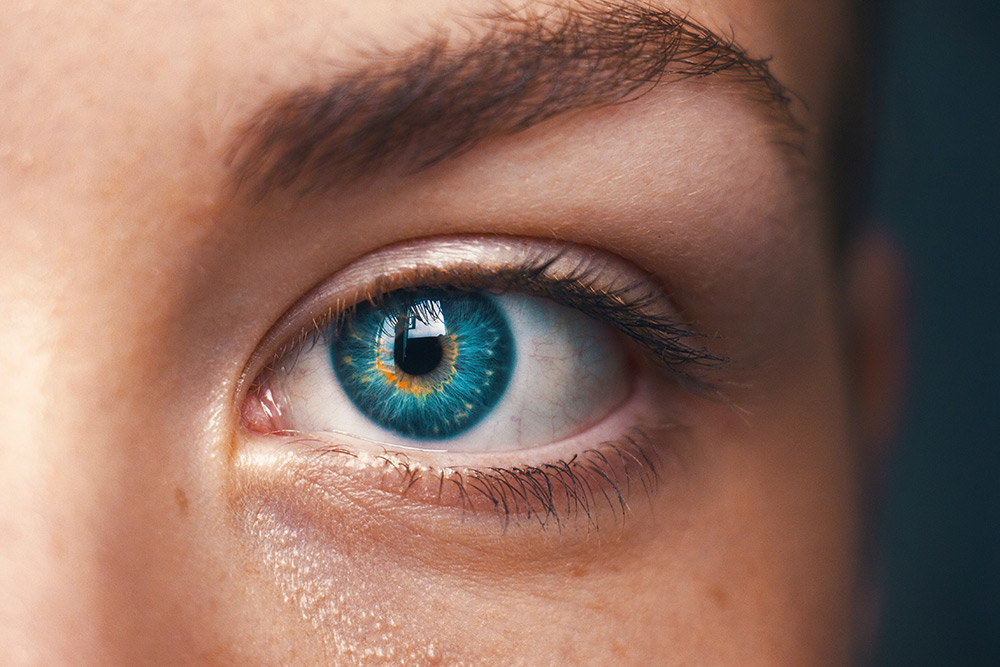Tag: eye health
Diabetes Symptoms: How Does Diabetes Affect Your Eyes?

Diabetes mellitus (DM) causes abnormal changes in the blood sugar (glucose) that your body ordinarily converts into energy to fuel different bodily functions.
Uncontrolled diabetes allows unusually high levels of blood sugar (hyperglycemia) to accumulate in blood vessels, causing damage that hampers or alters blood flow to your body’s organs — including your eyes.
Diabetes generally is classified as two types:
- Type 1 diabetes. Insulin is a natural hormone that helps regulate the levels of blood sugar needed to help “feed” your body. When you are diagnosed with type 1 diabetes, you are considered insulin-dependent because you will need injections or other medications to supply the insulin your body is unable to produce on its own. When you don’t produce enough of your own insulin, your blood sugar is unregulated and levels are too high.
- Type 2 diabetes. When you are diagnosed with type 2 diabetes, you generally are considered non-insulin-dependent or insulin-resistant. With this type of diabetes, you produce enough insulin but your body is unable to make proper use of it. Your body then compensates by producing even more insulin, which can cause an accompanying abnormal increase in blood sugar levels.
With both types of diabetes, abnormal spikes in blood sugar increase your risk of diabetic retinopathy.
Eye damage occurs when chronically high amounts of blood sugar begin to clog or damage blood vessels within the eye’s retina, which contains light-sensitive cells (photoreceptors) necessary for good vision.
To learn more about diabetes and other eye conditions, browse our Eye Health page.
The Consequences of Undetected and Untreated Vision Problems

Children with undetected vision problems are sometimes inaccurately diagnosed with attention deficit disorder (ADD) or attention deficit hyperactivity disorder (ADHD). When vision is difficult, it requires greater effort than normal, leading the child to avoid close work. It may appear the child is daydreaming
Many children with undetected vision problems struggle in the classroom. These symptoms include:
- Trouble finishing written assignments
- Losing their place when reading
- A short attention span when doing close work
- Skipping words when reading
- Having greater potential than grades may indicate
If your child appears to be experiencing any of these symptoms, call our office at (323) 656-9550 for a complete eye examination with one of our trusted Los Angeles eye doctors today!
Ask Your Eye Doctor: What is “Good Vision”?

To test for good vision includes measuring visual acuity, the ability of the eyes to see and distinguish fine details. In addition to visual acuity, visual integration must also be checked. This is the ability to process and integrate visual information so we can understand what we see. Other visual skills such as eye teaming (the ability of the eyes to work properly together), eye focusing (the ability of the eyes to easily focus and shift focus to near and distant points), and eye motility (the eyes ability to move together) must also be tested, along with checking eye health.
Good vision includes all of these visual components working well together. Vision screenings done at the pediatricians office and at school are very helpful, but is not a substitute for a comprehensive eye examination. If your child struggling in class, it could be due simply to an undetected vision problem.
Call our West Hollywood optometry office at (323) 656-9550 to set up an appointment with a Los Angeles eye doctor for a comprehensive eye examination today!
How Important is Good Vision to Learning?

Good vision is an important part of education. Many experts believe 80 percent of learning is done through a child’s eyes. Reading, computer usage, and chalkboard work are all visual tasks students perform every day. A child’s eyes are always in use in the classroom. Therefore, when they’re not working properly, learning and class participation will suffer.
Does your child need their eyes examined? Call us at (323) 656-9550 to set up an appointment with one of our optometrists today. We love seeing patients of all ages, including little ones!
May is Ultraviolet Awareness Month

Did you know ultraviolet (UV) and other radiation from the sun can harm your eyes?
Extended exposure to the sun’s UV rays has been linked to eye damage, including cataracts, macular degeneration, pingueculae and pterygia and photokeratitis that can cause temporary vision loss.
New research suggests the sun’s high-energy visible (HEV) radiation — also called “blue light“ — may increase your long-term risk of macular degeneration. People with low blood plasma levels of vitamin C and other antioxidants especially appear at risk of retinal damage from HEV radiation.
To protect your eyes from harmful solar radiation, sunglasses (tinted) or clear lens glasses should be coated with UV filters which block 100 percent of UV rays and also absorb most HEV rays. Frames with a close-fitting wraparound style provide the best protection because they limit how much stray sunlight reaches your eyes from above and beyond the periphery of your sunglass lenses.
Anyone who spends time outdoors, especially around water, sand or snow, is at risk for eye problems from UV radiation. Risks of eye damage from UV and HEV exposure change from day to day and depend on a number of factors, including:
- Geographic location. UV levels are greater in tropical areas near the earth’s equator. The farther you are from the equator, the smaller your risk.
- Altitude. UV levels are greater at higher altitudes.
- Time of day. UV and HEV levels are greater when the sun is high in the sky, typically from 10 a.m. to 2 p.m.
- Setting. UV and HEV levels are greater in wide open spaces, especially when highly reflective surfaces are present, like snow and sand. In fact, UV exposure can nearly double when UV rays are reflected from the snow. UV exposure is less likely in urban settings, where tall buildings shade the streets.
- Medications. Certain medications, such as tetracycline, sulfa drugs, birth control pills, diuretics and tranquilizers, can increase your body’s sensitivity to UV and HEV radiation.
Surprisingly, cloud cover doesn’t affect UV levels significantly. Your risk of UV exposure can be quite high even on hazy or overcast days. This is because UV is invisible radiation, not visible light, and can penetrate clouds.
The risk of damage to our eyes and skin from solar UV radiation is cumulative, meaning the danger continues to grow as we spend time in the sun throughout our lifetime. With this in mind, it’s especially important for kids to protect their eyes from the sun. Children generally spend much more time outdoors than adults. In fact, experts say nearly 50 percent (or more) of our lifetime exposure to UV rays may occur by age 18, given that many children spend significantly more time outdoors than the average adult. Therefore, make sure your kids’ eyes are protected from the sun with good quality sunglasses. Also, encourage your child to wear a hat on sunny days to further reduce UV exposure.
Come see us to get fitted for the perfect pair of prescription or non-prescription sunglasses to help protect your eyes from the sun (without sacrificing style). Schedule an appointment with our office by calling (323) 656-9550. Our optometrists look forward to seeing you!
